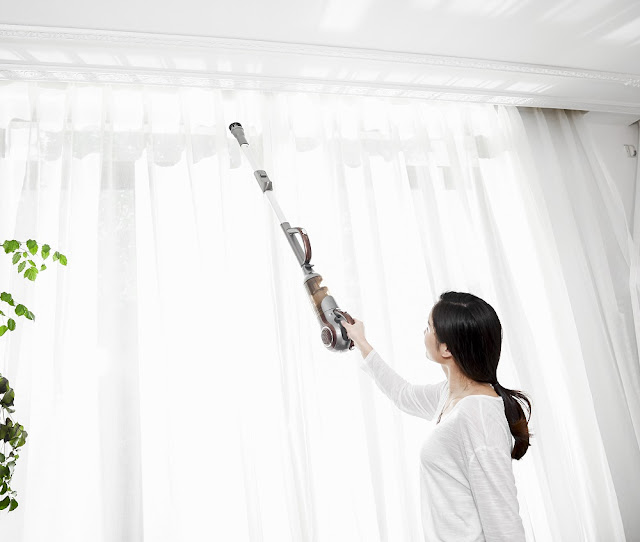Why should your hygienic endeavours settle for the typical
sweeping and mopping routines? Aren’t there spaces, objects or segments in your
household that demand your attention just as much? How often do we overlook
those sophisticated draping curtains hugging our windows, absorbing all that
filters through from the outdoors? This piece is dedicated to examining the
impact of regular curtain cleaning on indoor air quality and why it deserves a
spot in your home maintenance checklist.
Welcoming you to a broader horizon of home improvement, we
will traverse the layers of this current underdog. Are your curtains innocent
bystanders or do they perhaps play a more sinister role in your home’s air
quality? Together, we’ll uncover the answers, inviting you to reassess what
true cleanliness means indoors.
Sit back and allow us to illuminate the less trodden path in
the realm of home improvement. We'll delve into the wh-questions, breaking down
the pros and cons and offering insights all curated towards your habitat's
betterment. Let's embark on this enlightening journey!
The Why and How of Curtain Cleaning and Indoor Air Quality
 |
| Curtain Cleaning |
Clean curtains can do wonders for a room's aesthetics, but
did you know they also significantly impact the surrounding air quality?
Burdensome dust particles and allergens don't just disappear; they cling onto
surfaces in your home, including your curtains. Regular curtain cleaning
reduces the concentration of these air contaminants, helping people with
allergies or respiratory conditions breathe easier.
Likewise, particles are not the only threat. Smoke, cooking
Curtain Cleaningfumes, and even volatile organic compounds from certain household products
adhere to fabric surfaces, adding to the indoor pollution load. If left
unattended, they can gradually release these into the environment, affecting
the indoor air quality adversely.
By eliminating these covert carriers of pollutants through
regular and mindful cleaning, you disrupt this chain of pollution and reclaim
your home's air quality. But how often should you clean your curtains? Let’s
find out.
When To Clean Curtains: Timing is Everything
Unlike floors that demand daily attention, curtains have
differing upkeep timelines. Lighter fabric and high-traffic zones would
necessitate monthly cleaning, whereas thicker, less accessed spaces might need
bi-annual cleaning.
Of course, these are general guidelines. Specific factors
like allergies amongst family members, pets, or excessive outdoor pollution can
demand more frequent cleaning. By attending to these softer nuances, we not
only upkeep aesthetics but also create an environment conducive to wholesome
living.
Developing a cleaning schedule based on your home's
distinctive characteristics ensures the invisible enemy of indoor air pollution
is kept in check. But who should be in charge of this herculean task?
The Who of Curtain Cleaning: DIY or Professional?
While you could readily tackle this task, depending on the
curtains' fabric, weight, and size, professional dry cleaners may be the safer
bet. Delicate materials or oversized curtains might call for expert handling to
avoid damage.
However, if you're inclined towards DIY cleaning, ensure you
follow the manufacturer's instructions to the letter; it not only maintains the
curtain's aesthetic integrity but also its efficiency in trapping pollutants.
The Pros of Regular Curtain Cleaning
Improved air quality isn't the only perk to regular curtain cleaning. Alongside, you stand to gain prolonged curtain lifespan, enhanced
home aesthetics, and improved home hygiene levels. Moreover, this practice
chips away at the buildup of potential allergens, rendering your living spaces
more health-friendly.
The Cons Of Regular Curtain Cleaning
Every practice comes with potential cons. Regular curtain
cleaning might lead to premature fabric wear and tear if not done correctly.
Additionally, the costs of professional cleaning services or specially designed
cleaning products can add up over time. However, these possible downsides can
be mitigated with mindful and informed cleaning practices.



Post a Comment
Note: only a member of this blog may post a comment.